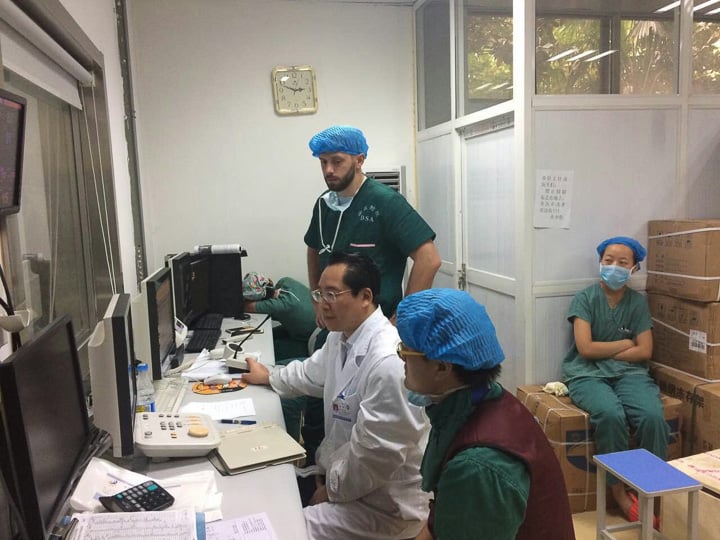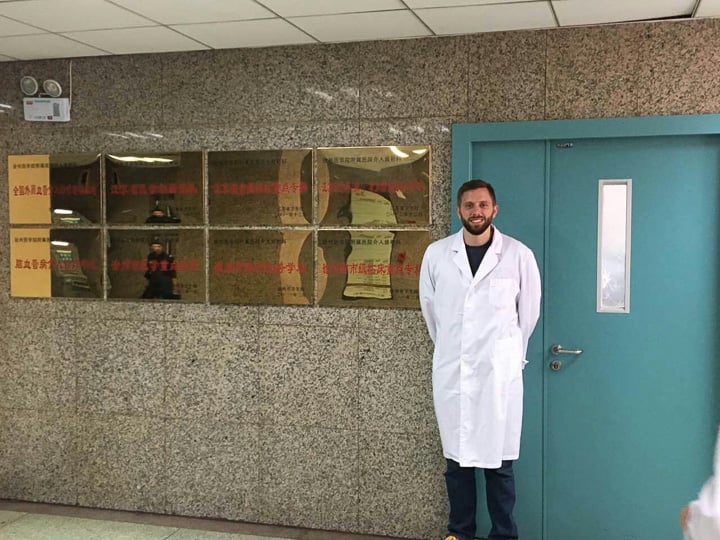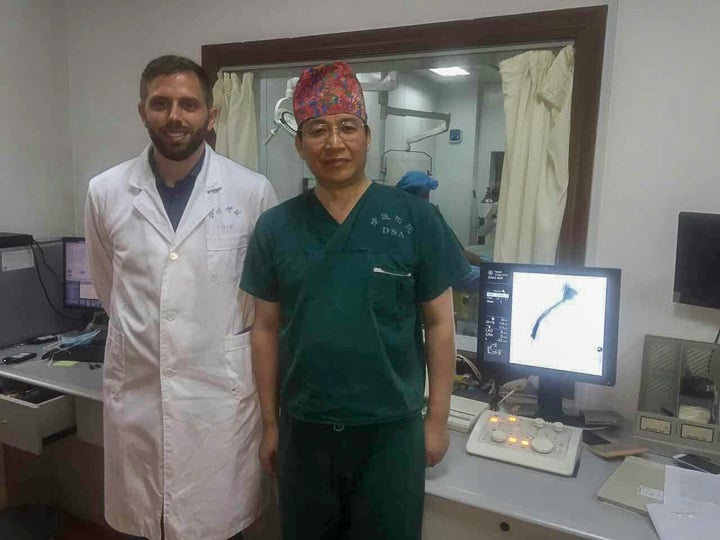Daniel Burritt, MD, Visits China to Study Budd Chiari Syndrome
Date Posted: Friday, December 16, 2016 Submitted by Daniel Burritt, MD, PGY-4 Radiology Resident
Submitted by Daniel Burritt, MD, PGY-4 Radiology Resident
Budd Chiari syndrome is a rare condition caused by occlusion of hepatic venous outflow. This occlusion leads to hepatic congestion and eventual necrosis. In the United States and other western countries, the leading etiology is acute/subacute hepatic vein thrombosis secondary to a hypercoagulable state. In developing countries, however, hypercoagulability is rarely the cause and patients more typically present with a more chronic course. Additionally, there are several regions in the far east where the incidence of Budd Chiari syndrome is significantly higher than the rest of the world. Eastern China, particularly the Jiangsu province, has the highest incidence of Budd Chiari syndrome in the world. Dr. Young Kim has been investigating this phenomenon in collaboration with several physicians in China, for the past few years and recently recruited me to aid in further research.
Many in the literature consider the type of Budd Chiari syndrome in developing industrial countries as a distinct variant and some suggesting it as a separate entity. Though the disease is still characterized as hepatic venous outflow obstruction, it is caused by the chronic development of a fibrous web, or membrane, in the inferior vena cava (IVC) and the outlets of the hepatic veins. The proposed mechanism is a chronic build up of thrombus which organizes over time into a fibrous tissue. The patients develop chronic mild symptoms as the membrane slowly narrows the IVC/hepatic venous outlets. Venous collaterals will develop resulting in visibly dilated subcutaneous abdominal wall veins.
My trip to China began in Nanjing, about a 4 hour drive north west of Shanghai. I spent a week in Nanjing teaching English and editing papers in exchange for a translator who would come with me to Xuzhou, another 4 hours north. While in Nanjing, I visited several temples and museums and indulged in the ethnic cuisine. Nanjing is known for their salted duck and they eat every part of the duck.
The hospital I visited was in Xuzhou, China where they see well over 100 cases of Budd Chiari syndrome a year. Over the course of 2 weeks, I saw 15 cases treated by their interventional radiology department. Treatment involves image guided puncture of the fibrous web and subsequent angioplasty. If present, acute thrombus is removed prior to membrane puncture using urokinase delivered through an AngioJetTM device. If angioplasty is insufficient to resolve the occlusion, a stent is placed.
At this point, the underlying etiology of fibrous web formation has eluded investigators. Epidemiological data shows that these patients are of a lower socioeconomic status and tend to live in rural areas. The vast majority of Chinese patients have elevated levels of serum iodine relative to the general population supposedly from the high levels of iodine in the yellow and huai river basins where most of these patients are located. Patients in other regions of the far east do not have elevated levels of serum iodine but this finding suggests that there is potentially an environmental factor at play. To investigate this further, we performed a cluster analysis of patients with Budd Chiari syndrome to see if specific hot spots exist and if surrounding environmental factors could be contributing. This is still a work in progress but preliminarily, our patient population tends to fit what is reported in the literature as predominantly involving patients in rural areas.
 |
 |
 |




